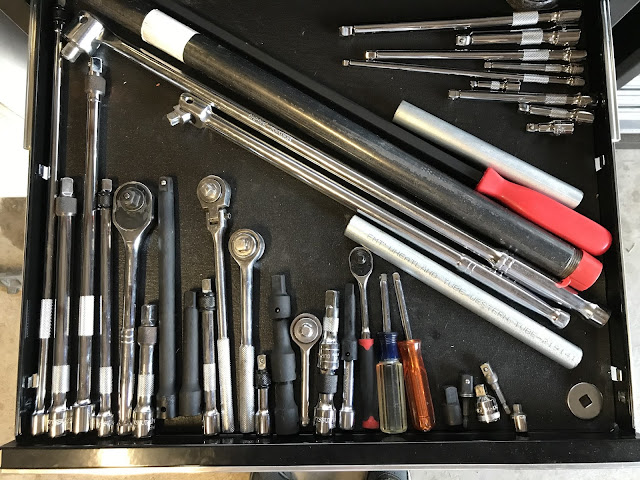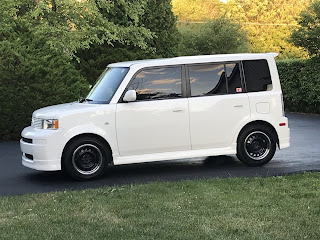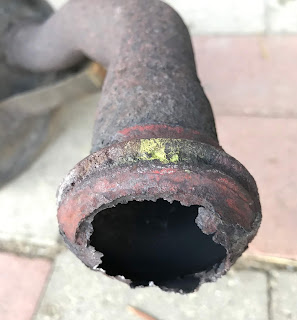Complete exhaust system replacement
2005 Scion xB
15-year-old, original exhaust, time to go.....
I noticed about 6 months back that my car idled louder than it had before, so I figured a hole rusted out somewhere in the exhaust. I got it up on a lift, and felt exhaust puffing out the top of the muffler. So I ordered a direct fit Bosal muffler. However upon trying to remove the old muffler from the rest of the piping, it snapped off just upstream of the muffler connection. (The whole pipe was probably rusted thin.) Ok,... I guess I'm replacing most of the exhaust. I ordered the rest of the system from the downpipe to the muffler. So I got downpipe, cat, resonator, muffler, hardware, gaskets, and piping for about $350 total.
Old muffler visual inspection
On disassembly, the pipe broke, on the upstream side of this connection
The OE stainless steel muffler lasted about 15 years before the seam came apart.
The old spring bolts, between the header and downpipe, wouldn't budge with my big breaker bar. So I bought a 1/2" drive, 1200 ft. lb. impact wrench, from harbor freight for about $280. Worked like a charm, and now I will have this tool handy for other stubborn bolts down the road.
The old exhaust parts
The first round of new exhaust components - $350
First attempt ended up being a "manufacturer fail."
The Bosal muffler was fine. However....The center section made by Eastern didn't fit right (supposed to be direct fit). It was a subtle thing. I didn't pick up on it right away. The spring bolt connection (female end) was not made to the proper depth, so it leaked, and was louder than it should have been. I wouldn't be able to see the nature of the problem, unless I mocked it all up, off of the vehicle.
Second try at new exhaust system
I decided, if my exhaust manifold was going to come off, for a mock-up to check fitment, I would replace it. So I found a brand new, 4 into 1, DC Sports-type, stainless steel header, for the bargain price of $98, from some private seller, on Ebay. Not sure what brand it is, but it is SS, nicely welded, with thick flanges. Plus I ordered a downpipe, cat, resonator, and pipe to the rear axle from Davico ($294), to use instead of Eastern, keeping the Bosal muffler. Confirming my suspicions, the Davico was made with a deeper receiver on the downpipe. It looked like it would work fine, and it did.
the 16-year-old OE manifold with the new aftermarket header.
I'm using stainless steel zip-ties to hold the shifter cables away from the heat.
There is no heat shield, and the primaries take up more space than the OE
The car does sound a little throatier now. Especially at cold start. Probably the header. Fairly factory sounding though, not too loud.
The new header is NOT meant to be a performance thing. It's just the cheapest option for the factory manifold I could find. The rest from the header-back is just meant to be factory. Even though I do have a short ram intake (and now the header), A performance cat-back alone, would run me at least $750, so I decided to pass on that, since we are not talking about any big power numbers.
I happened to have a chrome tip from an exhaust on another car, so I am using this to extend the tailpipe past the end of the bumper cover. You don't want exhaust gases released underneath the car. I had to get someone to weld it on, as I don't weld yet, but I will be acquiring that skill soon.
Project = success
Costs
Header $98
Cat-back $295
Muffler $115
miscellaneous hardware $15
(OE cat recycle -$70)
Total - $453





















































